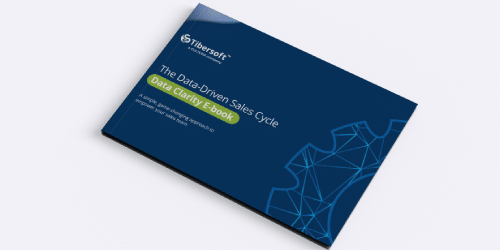What is Sous Vide?
In addition to my 25-year career in software development I am also an avid home cook, so it should come as no surprise that my kitchen is filled with tech gadgets ranging from infrared thermometers to a wi-fi enabled air fryer.
The molecular gastronomy trend in restaurants during the early aughts launched sous-vide cooking as the ultimate home cooking tech-geek, must-have toy. Sous vide involves vacuum-sealing food in a bag and cooking it in a precisely controlled water bath at low temperatures using an immersion circulator. The method certainly produces consistently tender and flavorful dishes.
Home cook adoption boomed as equipment prices dropped, supporting mobile apps were built, and sous vide recipes were featured on great cooking sites like Serious Eats. Restaurants as well continued to lean into the trend featuring modern, deconstructed, and avant-garde dishes that highlighted the tech. We started seeing things like ’48 hour sous vide short rib’ as a description on menus. And eventually, as with many trends, we saw a backlash. Diners don’t eat technology. Restaurants lost their way a bit when the lead was the tech and not the sizzling perfectly cooked rosemary butter basted ribeye.
What do Sous Vide and AI have in Common?
Similarly, artificial intelligence (AI) has emerged as a transformative tool across pretty much all industries. Just as sous vide allows chefs to achieve precise cooking results, AI empowers users to analyze vast amounts of data and make informed decisions. However, the effectiveness of both sous vide and AI hinges on understanding how to use them properly, rather than throwing the terms around when they’re on trend. That is doing a disservice to the power behind the technologies.
When attending conferences or webinars, or listening to sales pitches these days, it can feel like an AI label overload: “next gen” this or “AI powered” that. It’s important to question what this really means. How is this technology going to be used and what is it truly going to do for you?
In both cooking and technology, there’s a risk of focusing too much on the tool itself rather than the desired outcome. Just as a chef needs a clear vision of the dish they want to create before using sous vide, users of AI must define their objectives and questions to ask. Without this clarity, both endeavors can become exercises in technical proficiency without meaningful results.
As leaders in the AI space, we need to think about this new technology in terms of how we can positively impact customers and our partners. AI may not always be the right choice. If we’re not careful, the same thing as sous vide can happen with this new powerful, and incredible tool.
A Pragmatic Story: Data Lakes
Most, if not all, large food and beverage manufacturers have robust data today, such as in the form of a data lake. Organizations often invest in tools like data lakes to manage large amounts of data and may now be looking to add interesting tech stacks such as AI or machine learning capabilities. Without a clear strategy, they may find themselves drowning in data rather than deriving actionable insights. Effective data management requires more than just technological infrastructure; it necessitates a comprehensive strategy aligned with business objectives. The tool alone is not enough.
One of our clients recently shared with us:
“There’s so much data, so how do we simplify the data that’s out there and put it in digestible nuggets? Or simplify the amount of data that we push out to the team? I think that’s the biggest challenge. There’s so much, but you don’t always need everything that’s in the mix. What does the team really need to go out to make it actionable, and make it effective? We did a good job on that with Tibersoft. Otherwise, it becomes daunting… and it’ll get disregarded. If it’s inconsistent, it’ll be disregarded. Trust is a big part of it. It’s reducing it to what was needed. Because we could’ve given the sales team a lot more. Instead, let’s simplify it.”
Making the data work for you requires guidance on specifically what the user is trying to achieve ie, what job are they ‘hiring’ the data for? Otherwise, there is a risk that of engagement issues, analysis paralysis and overall low ROI on the investment. The end user is looking for something more palatable. You can’t consume a data lake, nor can you consume AI. It’s the “digestible nuggets” that end users are looking for. AI is the tool, not the other way around.
AI as a Tool: The Leaky Bucket Use Case
And so, how can we use AI as the powerful tool that it is to drive the food-away-from home industry forward? By asking the right questions and framing problems appropriately, organizations can leverage AI effectively.
For example, in exception reporting, AI can identify anomalies and areas of concern with speed and precision, surpassing human capabilities. At Tibersoft, users are very focused on where they might be losing business. Standard analytics tool can show you year-over-year performance to identify a problem. But many users suspected that these changes in buying behavior occur over longer period of time: think of a slow decline versus a cliff. An ML algorithm was the perfect tool to find trends in data that are not perceptible to humans. Based on the job the user is trying to accomplish, such as identifying sources of the ‘leaky bucket’, we can ask a machine learning tool to show you where there might be a slow decline in the data. The important part in creating this solution was understanding the business need and not the tool. Now users can now find dips months earlier than previously able to with machine learning acting as an early detection system.
In essence, both sous vide and AI serve as powerful tools when used appropriately, transcending their status as mere buzzwords. By focusing on desired outcomes and leveraging these tools strategically, individuals and organizations can drive value, efficiency, and innovation in their respective fields.
AI At Tibersoft
Tibersoft is actively investing in layering AI/machine learning capabilities to enhance our insights with more precision than ‘humanly possible.’ Over the past 2 years, Tibersoft has been investing in innovation around machine learning algorithms, and more recently, natural language processing. Our strategy for making an impact with these investments is to stay laser focused on the questions and challenges that are being asked and faced by our user community on a day-to-day basis. The user voice is always our driving voice.





